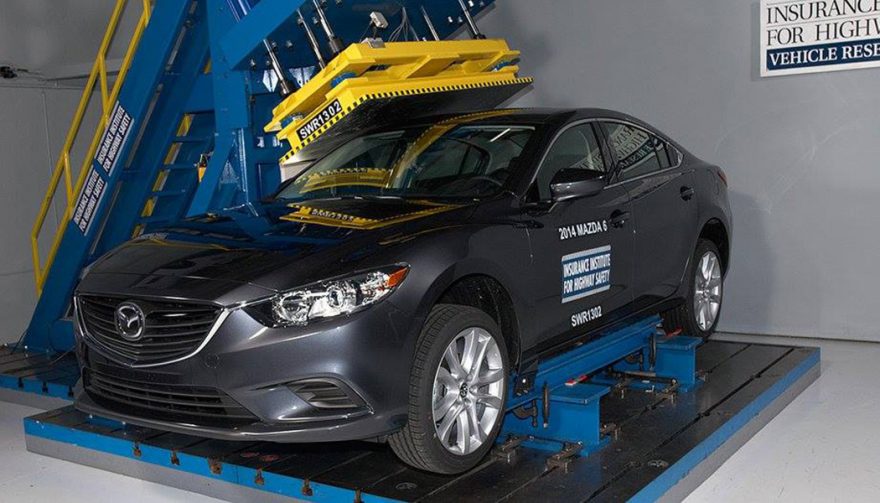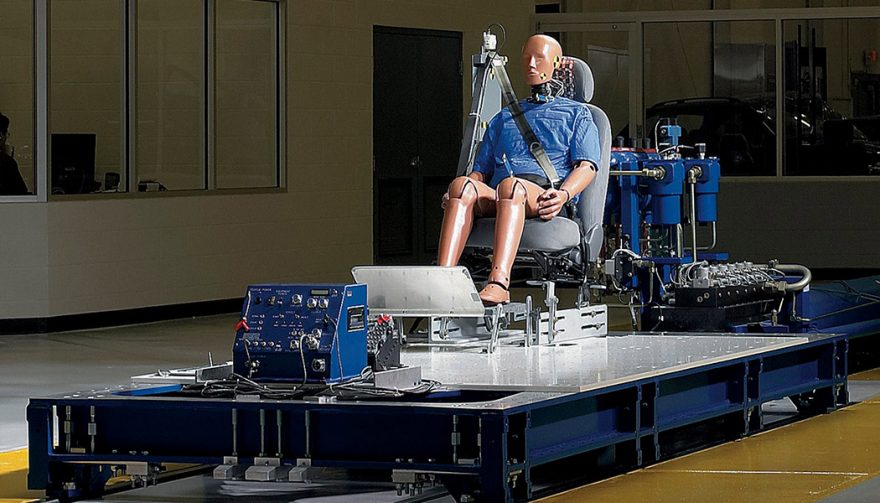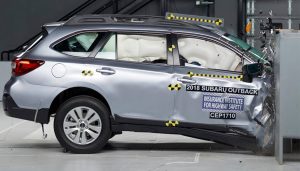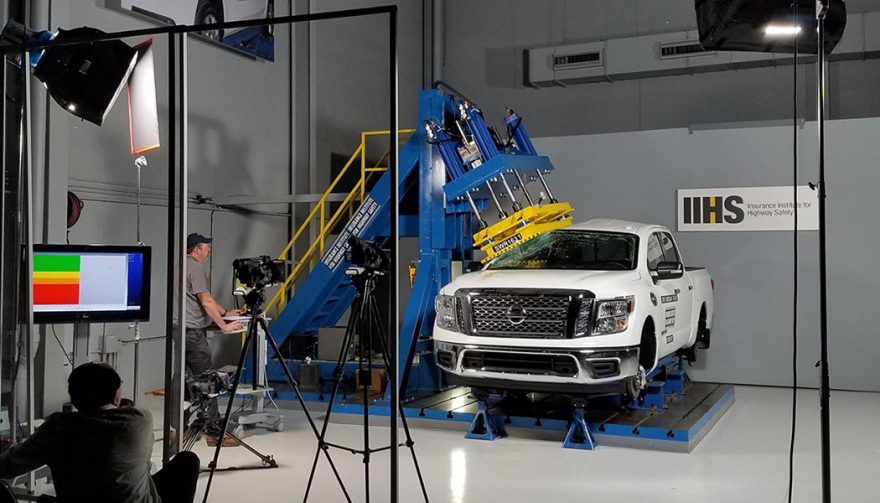
Get an idea how you should use safety ratings to evaluate a car or truck you may be thinking about purchasing.
Taking the Mystery Out of Car Safety Ratings
Nobody buys a new or used vehicle expecting to be involved in an accident while driving it. That said, car safety ratings and vehicle safety systems like adaptive cruise control, lane keeping, cross traffic alerts and others are key considerations when evaluating a new car or truck. Americans like complex issues to be reduced to simple explanations. Two main safety rating organizations, the National Highway Traffic Safety Administration (NHTSA) and the Insurance Institute for Highway Safety (IIHS), are happy to oblige with 5 Star ratings and Top Safety Pick+ designations for the “safest” cars.
But do you really know what that means? Do you know how the tests are conducted? Did the car they test have all the sophisticated safety equipment or was it the entry-level trim that didn’t have any of it? We’ll try to answer those questions for you and give you an idea how you should use the ratings to evaluate a car.
Car safety ratings have been around forever, right? Well if you consider since 1966 to be forever you are correct. In 1966 the National Highway Transportation Agency was established. The first thing they did was issue Federal Motor Vehicle Safety Standards (FMVSS) that spell out the minimum safety requirements for design, construction, and performance of every vehicle on the road in the United States.
The FMVSS are detailed. They spell out how a steering wheel or brake pedal should react to a driver. They deal with minutiae like the placement of mirrors and the operation of power windows. Manufacturers have to certify that their products are all in compliance with the FMVSS before they can put them on the showroom floor. They don’t have to have them tested, but they do have to certify them. This explains why so many expensive upscale rides are not smashed into concrete barriers to earn their ratings. The government has updated those standards since then, most recently adding mandatory back-up cameras.
Crash Testing for Dummies… Literally
While both the NHTSA and the IIHS both conduct crash testing, they don’t test the same way. That’s something to keep in mind particularly if one agency gives a higher score than another on the same car. Then there is the other obvious rating consideration that often goes unnoticed. A safety rating is awarded for a car compared to other cars in the same class. A subcompact with a five star rating will not be as crashworthy as a full-sized pickup. So, if you are driving a five Star Chevy Cruze compact, don’t expect to come out the winner in a crash with a five star GMC Acadia SUV.
As the official government organization, the NHTSA ratings are the ones you will see on the sticker of new cars. To get those ratings, NHTSA develops a test score for frontal impact, side impact and rollover resistance score. To establish that score, NHTSA performs several different types of crash tests.
- Front End Crash. In this test, the vehicle is loaded down with sensors, with two dummies placed in the front seats. The vehicle is accelerated to 35 mph and slammed into a concrete barrier.
- Side Impact Tests. NHTSA conducts two separate tests to evaluate how well a vehicle handles getting T-boned or smacking into a light pole or tree. The first involves placing a dummy in the driver’s seat and driver’s side rear seat. A moving barrier travelling at 38.5 mph is then crashed into the vehicle replicating an accident at an intersection. The second test uses a single dummy in the driver’s seat. A cable pulls the test vehicle into a concrete pole at 20 mph. How the vehicle performs on both tests is combined to come up with an overall score for side impact.
- Rollover Resistance. While not a crash test, NHTSA evaluates the likelihood of a vehicle tipping over when it suddenly changes direction. This is important data for SUVs, trucks and other high-profile vehicles.
Lastly, NHTSA gives extra credit for its overall score if the test vehicle is equipped with accident avoidance systems like rear-view camera and forward collision warning and lane departure warning systems.
How the Insurance Industry Rates Vehicles
The IIHS is privately funded by the insurance industry. Their testing is similar to NHTSA but varies somewhat to reflect accidents that are more real-world based on claims made.
- Front Crash. The IIHS conducts two front-end tests and this is where you see the difference in approach with the NHTSA procedures. The first is the small overlap test. The impact (which occurs at 40 mph) only covers about a quarter of the front end, specifically the driver’s side. This simulates a vehicle slipping out of lane and hitting an oncoming vehicle. A second test called modified overlap collision, impacts roughly half of the front end replicating a head-on crash.
- Side Impact. This one is pretty much identical to NHTSA testing except the collision occurs at the slightly slower speed of 31 mph.
- Rollover Resistance. IIHS doesn’t measure rollover characteristics. They are, however, interested in the strength of the roof. They place the test vehicle in a special machine and crush the roof by 5”. The amount of pressure required to hit 5” determines the safety rating for the roof.
- Rear-end Collision. It is important to insurance companies how a vehicle performs when hit from behind. Rear-end collision tests mount the seats, airbags, and seat belts on a test platform. With a strapped in dummy, the platform is moved to mimic a rear-end collision.
- Crash Prevention Systems. Unlike NHTSA, IIHS actually tests forward collision warning and automatic braking systems. The test vehicles are driven toward an inflatable barrier at 12 mph, then again at 25 mph. Systems are evaluated on how well they prevent or avoid a collision altogether.
- Headlights Since avoiding an accident is better than having one, the IIHS recently added a test of vehicle headlights. It measures how far the beam travels, how well it lights the sides of the road, and if they blind oncoming traffic. Passing this newest test is required to get the top IIHS rating.
While a car with a higher safety rating is probably more capable in an accident than a vehicle in the same class with a lower rating, It doesn’t mean it’s bullet-proof. It’s painfully obvious that the speeds at which these tests are conducted are only real world in a parking lot or side street, though the IIHS does base them on the most common real crashes. How a car will react at 70 mph (front end collision between 2 cars going 35 mph) is anybody’s guess.
At the end of the day, regardless of ratings, the safest crash is the one that doesn’t happen. Don’t ignore the car safety ratings, particularly low ratings, but know they are not intended as guarantees.







